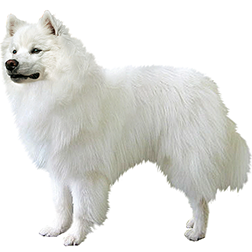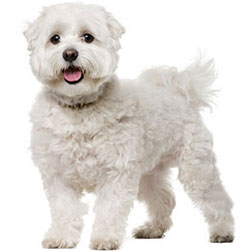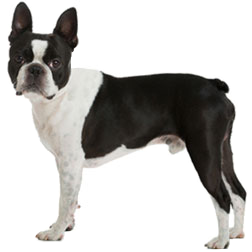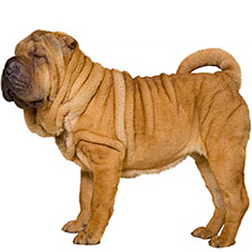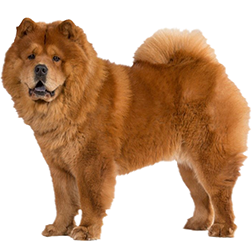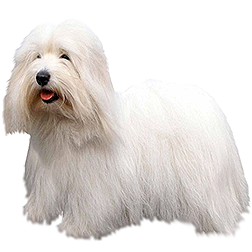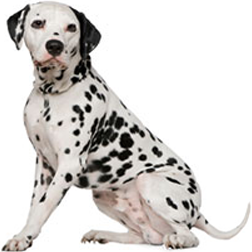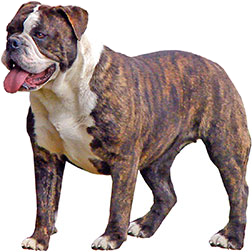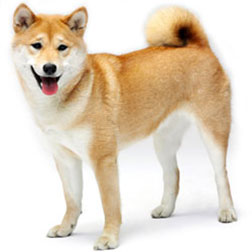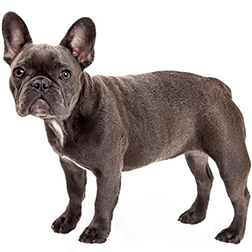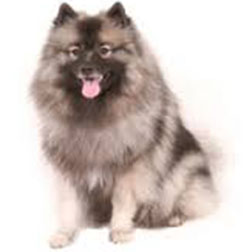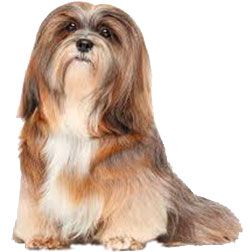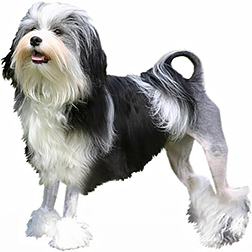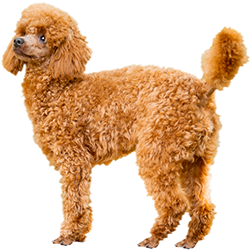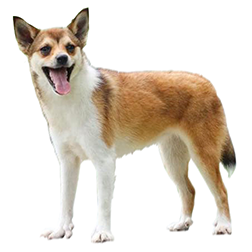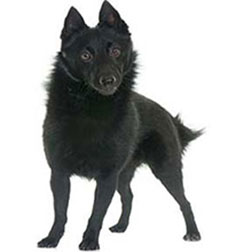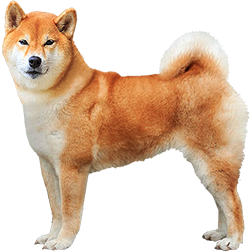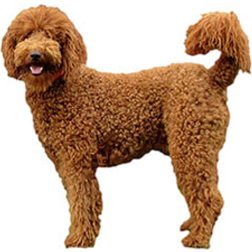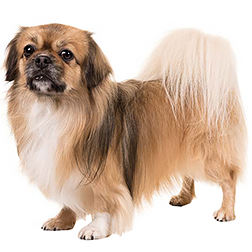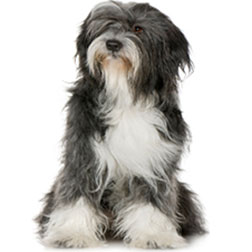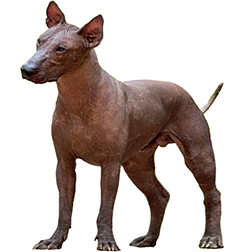Non-Sporting Dog Breeds
The Ultimate Non-Sporting Dog Group Guide
Non-Sporting Dog Breeds: A Diverse Delight
Picture a room full of party guests—each one unique, vibrant, and utterly fascinating in their own way. Some are outgoing and ready to charm everyone, while others are quieter, content to observe the action with quiet dignity. Now imagine this eclectic mix of personalities wrapped up in fur, wagging their tails, and you’ve just stepped into the world of the Non-Sporting Dog Breeds Group.
Unlike other groups defined by their work—herding livestock, hunting game, or pulling sleds—Non-Sporting dogs are a glorious grab bag of companions. Their unifying characteristic? They defy categorization. From the lion-like poise of the Chow Chow to the clownish antics of the French Bulldog, this group is all about individuality.
A Brief History
The Non-Sporting Group emerged as a "catch-all" category when early kennel clubs began sorting dogs into groups based on their traditional roles. But what about breeds that didn’t quite fit into the usual job descriptions? Enter the Non-Sporting Group: home to dogs bred for companionship, ceremonial roles, or simply because their unique traits were too wonderful to overlook. These breeds hail from all corners of the globe, showcasing a stunning variety of appearances, temperaments, and histories.
Why Non-Sporting Breeds Stand Out
While other groups are often celebrated for their working ability, the Non-Sporting Group revels in its versatility. These dogs are not defined by their job titles but by their individuality. Whether you’re seeking a dignified protector, a playful entertainer, or a low-maintenance companion, there’s likely a Non-Sporting breed that fits the bill.
A Journey Through the World of Non-Sporting Breeds
Imagine strolling through a park, your attention caught by a kaleidoscope of dogs: the regal Chow Chow with its lion-like mane, the perpetually smiling Keeshond, and the playful antics of a Boston Terrier bounding after a ball. This is the Non-Sporting Dog Group in action—a collection as diverse as the personalities that own them. Each breed brings its unique flair, making this group a treasure trove of canine variety.
The Non-Sporting breeds don’t fit neatly into one box. They weren’t all bred to herd sheep, flush game, or guard the homestead. Instead, these dogs shine in their individuality, boasting talents that range from charming companions to watchdogs with a flair for the dramatic. Whether you’re a fan of the cuddly Bichon Frise or the stoic Tibetan Spaniel, there’s something for everyone in this eclectic mix.
Why This Group Captivates Dog Lovers
What’s not to love about a group of dogs that refuses to be pigeonholed? Non-Sporting breeds are adored for their adaptability and unique personalities. For families, they offer playful yet manageable companions; for singles, they’re steadfast confidants; and for dog enthusiasts, they’re a study in fascinating contrasts.
Take the Dalmatian, a breed steeped in history as a coach dog, now just as likely to curl up on the couch. Or the French Bulldog, whose quirky bat ears and easy-going nature make it a favorite among urbanites. Dog lovers gravitate to this group because there’s a breed for every lifestyle—whether you want a pint-sized Lowchen or the statuesque Standard Poodle.
Surprising First Impressions
Think you’ve got these breeds figured out? Think again!
- "Aren’t all Dalmatians firehouse mascots?" Actually, their history as coach dogs predates their firehouse fame. Their stamina and loyalty made them perfect traveling companions for horse-drawn carriages.
- "French Bulldogs aren’t athletic, right?" While they’re not sprinters, these little powerhouses can surprise you with their bursts of energy during play.
- "Chow Chows are just aloof teddy bears." Aloof, yes. Teddy bears? Not exactly. This ancient breed’s dignified demeanor comes with a fiercely loyal streak and a sharp intellect.
Naming Origins and General Characteristics
The Non-Sporting Group got its name from its diversity. Early kennel clubs struggled to classify breeds that didn’t quite fit into established working roles. Thus, this "catch-all" group was born.
General characteristics of the group include
- Temperament: From the lively and mischievous (like the Schipperke) to the calm and serene (like the Tibetan Spaniel), there’s a wide range of personalities.
- Physical Attributes: The variety is astounding—from the smooth, sleek coat of the Xoloitzcuintli to the luxurious fluff of the American Eskimo Dog.
- Roles in Society: Historically, these dogs have been companions, ceremonial pets, and watchdogs. Today, they continue to charm with their versatility.
Historical Background
From Ancient Roots to Modern Homes
The history of the Non-Sporting Dog Breeds Group is as diverse and colorful as the breeds themselves. These dogs have roots that span centuries and continents, each with its own remarkable tale. For instance, the Xoloitzcuintli, also known as the Mexican Hairless Dog, dates back over 3,000 years to the Aztec civilization, where it was considered sacred and a guide to the afterlife. Meanwhile, the Chow Chow is thought to be one of the oldest breeds in existence, originating in ancient China, where it served as a hunter, guardian, and even a royal companion.
As time passed, many Non-Sporting breeds transitioned from utilitarian roles to beloved household companions. The Dalmatian, once a coach dog trotting alongside horse-drawn carriages, now graces homes as a loyal family pet. Similarly, the Boston Terrier, originally bred for pit fighting in the United States, evolved into a charming and affectionate lap dog with its tuxedo-like coat and endearing personality.
This group’s evolution into modern homes underscores their adaptability and enduring appeal. Whether guarding palaces, gracing noble courts, or warming our laps on cozy evenings, these breeds have proven they belong in every era.
Legends and Lore
The Non-Sporting breeds are steeped in legends that amplify their mystique and allure. Take the Finnish Spitz, Finland’s national dog and a breed celebrated for its ability to sing—yes, sing! Known as "the Bark Pointer," its unique vocalizations helped hunters locate game deep in the forest. Its musical talents earned it a place in Finnish folklore, where it was said to charm even the shyest woodland creatures.
The Dalmatian’s association with firehouses also has roots in legend. During the era of horse-drawn fire carriages, these strikingly spotted dogs would calm the horses amidst the chaos of an emergency, leading to their modern image as heroic firehouse mascots.
Then there’s the Coton de Tulear, a breed named after its silky, cotton-like coat. According to Malagasy folklore, these small dogs survived shipwrecks and swam to the shores of Madagascar, where they became the favored pets of royalty and the wealthy elite.
Cultural Connections
Non-Sporting breeds have left their pawprints on cultures around the globe. The Chow Chow, often depicted in ancient Chinese art and sculpture, was revered for its lion-like appearance and its ability to protect Buddhist temples. In contrast, the Shiba Inu, one of Japan’s oldest native breeds, remains a cultural icon in its homeland, celebrated in modern media as a symbol of loyalty and resilience.
The French Bulldog, a favorite of Parisian artisans during the 19th century, became a staple of French café culture. Its compact size and friendly demeanor made it an ideal companion for city dwellers. Similarly, the Lhasa Apso, originating from Tibet, was a symbol of good luck and a guardian of monasteries, earning its place as a revered and cherished breed.
These cultural connections not only highlight the rich histories of the Non-Sporting breeds but also demonstrate their timeless ability to adapt and thrive in human society.
Classification and Standards
What Makes This Group Unique?
Imagine sorting through a jewelry box filled with gems of all shapes, sizes, and colors. There’s no single way to categorize them because each is dazzling in its own right. That’s the Non-Sporting Dog Breeds Group—a kaleidoscope of canine variety that refuses to fit into neat boxes like “Herding” or “Sporting.” These breeds are united not by their jobs but by their individuality.
From the teddy bear-like Bichon Frise to the sleek and ancient Xoloitzcuintli, this group is defined by its diversity. Whether you want a lapdog, a watchdog, or a playful clown, the Non-Sporting Group offers something for everyone. They’re like the wildcard in a deck of cards—always surprising, always delightful.
Meet the Judges
When kennel clubs classify breeds, it’s less about personality and more about pedigree, physical traits, and history. For the American Kennel Club (AKC), the Non-Sporting Group is a catch-all for breeds that don’t fit traditional working roles. But don’t let the term "catch-all" fool you—judges approach this group with the same rigor as any other. They assess breeds based on detailed standards: coat texture, eye shape, movement, and even temperament.
Fun fact: judges often find this group the most challenging because of its diversity. Imagine switching from evaluating the fluffiness of an American Eskimo Dog’s coat to assessing the sleek elegance of a Dalmatian in the same round. It’s like comparing apples to oranges—or, in this case, lions to teddy bears!
Breed Wars
Every dog lover knows that breed classification can spark lively debates, and the Non-Sporting Group is no exception. Some breeds have been shuffled between groups over the years, leading to playful rivalries and passionate opinions.
Take the Standard Poodle, for instance. Historically a water retriever, it could easily have landed in the Sporting Group. But its refined elegance and popularity as a companion dog earned it a permanent spot in the Non-Sporting category. Similarly, the Boston Terrier—a quintessential American breed—was originally classified as a Terrier before its friendly demeanor and urban popularity led to a reclassification.
And then there’s the Shiba Inu, which some argue could fit in the Working Group due to its spitz lineage. Yet its independence and quirky personality feel right at home in the Non-Sporting lineup. These debates add an extra layer of intrigue to the group’s eclectic charm.
Variations Across Regions
What’s in a name—or a classification? Quite a lot, depending on where you are. While the AKC groups these breeds into the Non-Sporting category, international organizations like the Fédération Cynologique Internationale (FCI) often classify them differently. For example
- The Shiba Inu is listed under the FCI’s "Spitz and Primitive Types."
- The French Bulldog might be grouped with companion dogs in other systems.
These variations highlight the complexities of breed classification. What one organization sees as a "non-sporting" dog, another might categorize based on lineage, function, or even size.
Physical Characteristics
A Walk Through the Lookbook
Welcome to the runway of the Non-Sporting Dog Breeds Group, where every model brings their unique style and charm. First down the catwalk is the regal Chow Chow, strutting with a lion-like mane and a blue-black tongue that’s as rare as it is striking. Close behind, the sleek and sophisticated Standard Poodle commands attention with its iconic curly coat, a true classic of elegance and versatility.
Next comes the French Bulldog, confidently showing off its compact, muscular build and those unmistakable bat-like ears. The Dalmatian follows, dazzling the audience with its striking spotted coat—a pattern as unique as a fingerprint. Don’t blink, or you’ll miss the Xoloitzcuintli, whose hairless skin and ancient presence bring a minimalist yet powerful vibe to the show.
The diversity of sizes, coats, and features is nothing short of mesmerizing. From the plush, fluffy American Eskimo Dog to the smooth-coated Boston Terrier, this group proves that beauty comes in every form imaginable.
Quirky Traits and Fun Facts
The Non-Sporting Group is full of physical quirks that make each breed unforgettable. Here are just a few
- The Chow Chow’s Blue-Black Tongue: Legend has it that this rare feature is the result of the Chow helping the gods paint the sky.
- The Shiba Inu’s Tail: This breed’s tightly curled tail acts as a weather shield, helping keep its back warm during cold Japanese winters.
- The Dalmatian’s Spots: While every Dalmatian is born pure white, their iconic spots gradually appear within a few weeks, creating a pattern unique to each dog.
- The Boston Terrier’s Tuxedo Coat: Often called the “American Gentleman,” this breed’s signature black-and-white markings give it a formal, dressed-up look every day.
And let’s not forget the Finnish Spitz, whose fox-like face and vibrant red coat make it an instant head-turner. Known for its “singing” ability, this breed adds both beauty and personality to the group.
Diversity Within the Group
If variety is the spice of life, then the Non-Sporting Group is the ultimate flavor sampler. This group showcases dogs of all shapes, sizes, and coat types, from the fluffy and hypoallergenic Coton de Tulear to the sleek and ancient Xoloitzcuintli. Whether you prefer the compact size of a Schipperke or the larger stature of a Standard Poodle, there’s a breed here to match every aesthetic preference and lifestyle.
This visual diversity isn’t just beautiful—it’s a testament to the group’s adaptability. These dogs are equally at home in urban apartments or sprawling countryside estates, proving that great looks and versatility often go hand in hand.
Temperament and Personality
The Group’s Signature Charm
The Non-Sporting Dog Breeds Group is like a collection of charismatic characters in a beloved TV series—each has a distinct personality, but they all bring something unforgettable to the table. These dogs are known for their adaptability and individuality, often making them the life of the party (or the quiet observer, depending on the breed).
Take the Boston Terrier, for instance—ever the comedian, it loves to entertain with playful antics and goofy expressions. Meanwhile, the dignified Shiba Inu approaches life with a stoic elegance, often exuding a “been there, done that” vibe. The Keeshond, known for its perpetual smile, is a social butterfly, happiest when surrounded by people to charm.
While their personalities vary, one common thread binds them: an undeniable charm that captures hearts. Whether through playful mischief, quiet companionship, or steadfast loyalty, these dogs leave a lasting impression.
What Owners Love Most
Ask any Non-Sporting dog owner what they adore about their pet, and you’ll likely hear an outpouring of affection for their unique quirks. Owners of French Bulldogs rave about their dogs’ hilarious snorts and dramatic “talking” sessions, while Chow Chow lovers can’t get enough of their independent, cat-like behaviors. Dalmatian enthusiasts are smitten with their dogs’ boundless energy and zest for life, which makes every day an adventure.
Then there’s the Tibetan Spaniel, which has perfected the art of lap lounging—a trait its owners cherish after a long day. The Finnish Spitz, on the other hand, wins hearts with its “singing,” a melodic bark that’s as endearing as it is unique.
These breeds often form deep bonds with their families, becoming devoted companions who thrive on attention, affection, and shared experiences.
Unexpected Personalities
While Non-Sporting dogs are known for their individuality, some take it to surprising levels, breaking stereotypes along the way. Consider the usually reserved and aloof Chow Chow—while the breed is known for its independence, some Chow Chows defy expectations by being clingy cuddlebugs, following their owners around like shadows.
Or take the Schipperke, often described as mischievous and high-energy. A famous Schipperke named "Biscuit" became a therapy dog, known for its calm and nurturing demeanor in hospitals—a far cry from its reputation as a little rascal.
Even the refined Standard Poodle, typically associated with elegance, occasionally surprises owners with its goofy, playful antics, proving it can be just as silly as any other dog when the mood strikes.
These delightful surprises are part of what makes the Non-Sporting Group so captivating. Each dog is a personality waiting to shine, full of quirks that keep their owners smiling.
Purpose and Roles
Original Roles and Modern-Day Marvels
The Non-Sporting Dog Breeds Group may not be defined by specific working tasks, but that doesn’t mean they’ve been idle throughout history. Many of these breeds were developed for distinct purposes that set them apart. The Dalmatian, for instance, historically served as a coach dog, trotting alongside horse-drawn carriages to guard against highwaymen and calm the horses. Meanwhile, the Lhasa Apso was bred to guard Tibetan monasteries, its acute hearing making it a living alarm system.
Fast forward to the present, and these breeds have adapted beautifully to modern life. The once-watchful Chow Chow now enjoys a quieter role as a loyal companion, while the Boston Terrier’s playful nature makes it a favorite in agility competitions. And let’s not forget the Non-Sporting Group’s newfound fame as social media darlings—the quirky expressions of the French Bulldog have made it an Instagram sensation!
Many of these breeds have also found purpose as therapy dogs, bringing comfort and joy to people in hospitals, schools, and senior living facilities. Their adaptability and unique personalities make them perfect for roles that require connection and understanding.
Famous Dogs in History
The Non-Sporting Group is home to some legendary dogs whose stories continue to inspire.
One iconic example is Pongo and Perdita—fictional Dalmatians immortalized in Disney’s 101 Dalmatians. While they’re cartoon characters, the story drew attention to the breed’s intelligence and devotion to family.
In real life, the Schipperke named “Nipper” became the face of RCA Records, its curious pose listening to a phonograph etching itself into pop culture history. Another famous figure is Gidget, the Lhasa Apso who gained recognition as a celebrated therapy dog, providing comfort to disaster victims across the United States.
Even the regal Chow Chow gained royal approval when Queen Victoria kept one as a pet, bringing the breed into the spotlight in England.
Superstars in Action
The Non-Sporting Group boasts breeds that continue to excel in diverse roles.
- Therapy Heroes: The Coton de Tulear’s gentle temperament and hypoallergenic coat make it an ideal therapy dog, bringing smiles to children and seniors alike.
- Agility Champs: The Standard Poodle’s intelligence and athleticism shine in agility trials, where it often steals the show with its precision and speed.
- Working Watchdogs: The Tibetan Spaniel, though small, maintains its historic role as a watchdog, alerting families to any unusual activity with its sharp bark.
- Internet Celebrities: The French Bulldog’s quirky facial expressions have launched countless memes and viral videos, making it a favorite among online audiences.
These stories underscore the Non-Sporting Group’s adaptability and enduring appeal. From historical guardians to modern-day companions and even digital superstars, these dogs prove they’re more than just pretty faces—they’re integral parts of our lives.
Training and Obedience
Training Tales
Training a Non-Sporting breed is often like navigating a puzzle—you’ll need patience, creativity, and perhaps a sense of humor. Take, for example, a Boston Terrier named Max, whose owner proudly declared him “fully trained” until Max outsmarted her by opening the fridge and helping himself to leftovers. Or Daisy, a Chow Chow, who learned to sit—but only when she felt like it, proving that some dogs value their independence more than a treat.
On the flip side, there’s Lucy, a Standard Poodle who became a shining star in obedience classes, mastering advanced tricks like balancing a treat on her nose. These stories highlight the individuality of the Non-Sporting breeds—some will make you laugh, others will make you marvel, and all will keep you on your toes.
Tips from the Pros
Training a Non-Sporting breed requires an understanding of their unique personalities and motivations. Here are some expert tips
- Make It Fun: These dogs thrive on engagement. Turn training sessions into games, whether it’s hide-and-seek with treats or teaching them agility tricks.
- Positive Reinforcement is Key: Non-Sporting breeds often respond best to rewards rather than corrections. Use treats, praise, or their favorite toys to encourage desired behavior.
- Know Your Breed: While a Dalmatian may love high-energy activities, a Lhasa Apso might prefer shorter, calmer training sessions. Tailor your approach to match their temperament.
- Consistency Matters: These clever dogs can quickly pick up on inconsistencies in training. Ensure all family members use the same commands and rewards.
- Start Early: Begin socialization and basic obedience training as soon as possible. This is especially important for breeds like the Shiba Inu, whose independence can make later training more challenging.
Challenges and Triumphs
Training a Non-Sporting dog isn’t without its hurdles. Breeds like the Chow Chow and Shiba Inu are known for their stubborn streaks, often leaving owners scratching their heads over how to gain cooperation. But don’t despair—creative techniques can make all the difference.
For stubborn breeds, try finding their unique motivator. For example, a Schipperke might work tirelessly for a squeaky toy, while a food-loving Keeshond will do anything for a bit of cheese. Shorter, focused sessions can also help prevent boredom in breeds with strong independent streaks.
On the flip side, some Non-Sporting breeds, like the Standard Poodle or Boston Terrier, are quick learners with a knack for performing. With consistency and positive reinforcement, these breeds often excel in obedience, agility, and even therapy work.
While the journey might have its bumps, the rewards of training these unique breeds are unparalleled. With time, patience, and a dash of humor, you’ll discover the joy of seeing your dog’s personality shine through their newfound skills.
Health and Care
Keeping Them Happy and Healthy
Caring for Non-Sporting breeds is a bit like tending a garden—each breed is unique and requires just the right balance of attention to thrive. From the plush-coated Keeshond to the sleek and hairless Xoloitzcuintli, every breed comes with its own set of needs. Let’s dig into the basics!
For most breeds, a balanced diet, regular exercise, and routine vet check-ups are essential. A Dalmatian’s unique urinary system calls for a low-purine diet to prevent health issues, while a French Bulldog may require special care in hot weather due to its flat-faced (brachycephalic) anatomy.
Grooming is another key aspect. The Chow Chow’s thick, lion-like mane needs frequent brushing to prevent matting, while the Coton de Tulear’s cotton-like coat requires regular detangling to keep it soft and pristine. Meanwhile, the Xoloitzcuintli might need sunscreen during sunny days—yes, really! Their hairless skin is sensitive to UV rays.
Approach each breed’s care with their individuality in mind, and you’ll be rewarded with a happy, healthy companion.
Weird but True
Non-Sporting breeds are full of quirks, and their health and habits are no exception. Here are some weird-but-true facts about these fascinating dogs
- Dalmatian Drama: Did you know Dalmatians are prone to deafness? About 30% of Dalmatians have some degree of hearing loss, a trait linked to their unique spotted coat.
- Chow Chow’s Blue Tongue Mystery: The Chow Chow’s iconic blue-black tongue isn’t just for show—it’s a trait shared with only one other breed, the Shar-Pei. Scientists still aren’t entirely sure why!
- Shiba Inu’s Cat-Like Cleanliness: Shibas are known for grooming themselves like cats, keeping their coats remarkably clean and odor-free.
- Poodle’s Hypoallergenic Advantage: While no dog is 100% hypoallergenic, Poodles are one of the best options for allergy sufferers thanks to their unique, non-shedding coats.
These fascinating traits highlight the diverse and unique nature of the Non-Sporting Group, keeping their owners intrigued and entertained.
Playtime is Medicine
When it comes to keeping Non-Sporting breeds mentally and physically fit, play is just as important as food or grooming. Think of it as the secret ingredient in their recipe for happiness.
Breeds like the Boston Terrier thrive on interactive games like fetch or tug-of-war, turning every play session into a cardio workout. The Finnish Spitz, with its hunting heritage, loves puzzle toys that challenge its mind and satisfy its instincts. Even the dignified Tibetan Spaniel enjoys a good game of chase, proving that every breed has its playful side.
Beyond the fun, playtime offers real health benefits. Regular exercise keeps obesity at bay, reduces the risk of joint issues, and helps prevent boredom-induced behaviors. Plus, the mental stimulation strengthens the bond between you and your furry friend. So grab a ball, tug toy, or even a treat-dispensing puzzle, and let the good times roll!
Socialization and Compatibility
Your New Best Friend
The Non-Sporting Dog Breeds Group is a treasure chest of personalities, and one thing they all share is their ability to form deep, meaningful bonds with their families. Whether it’s the ever-smiling Keeshond or the dignified Tibetan Spaniel, these breeds know how to make you feel like the center of their world.
Take the story of Luna, a French Bulldog who became her owner’s shadow, following him everywhere and making even mundane errands a joy. Or Max, the Boston Terrier who formed an unshakable friendship with a child in his family, always ready to play, cuddle, or cheer up a bad day. These dogs have a knack for weaving themselves into the fabric of family life, becoming beloved companions and confidants.
Their versatility also shines here. While some breeds are natural social butterflies, like the outgoing Dalmatian, others, such as the independent Shiba Inu, may take their time to warm up but prove deeply loyal once trust is earned.
Lessons in Friendship
Socializing a Non-Sporting dog is a delightful and rewarding journey. These breeds generally thrive in family settings but benefit greatly from early exposure to a variety of people, pets, and environments. Here are a few practical tips
- Start Early: Begin socialization during puppyhood when they’re most impressionable. Introduce them to new sounds, sights, and experiences to help build confidence.
- Practice Patience: Breeds like the Chow Chow or Lhasa Apso can be reserved around strangers. Allow them to approach new people and situations at their own pace.
- Positive Reinforcement: Reward good behavior with treats, praise, or playtime. This encourages them to associate new experiences with positive outcomes.
- Kid-Friendly Encounters: Many Non-Sporting breeds, such as the Coton de Tulear, are natural with children, but always supervise interactions to ensure both the child and dog are comfortable and safe.
- Introducing Other Pets: When bringing a Non-Sporting dog into a multi-pet household, slow introductions are key. For instance, a Schipperke may get along with cats but needs structured introductions to avoid its natural herding instincts kicking in.
Heartwarming Scenarios
Imagine Molly, a Dalmatian, bounding into a backyard filled with children. Her high energy and playful spirit make her the ultimate playmate, fetching balls and keeping up with even the most energetic kids. Meanwhile, Bella, a calm and gentle Keeshond, visits a senior living center, bringing smiles and comfort to residents as they stroke her plush coat.
Then there’s Leo, a Shiba Inu who, despite his independent nature, formed a surprising friendship with the family’s rescue cat. Over time, the two were inseparable, often found napping together in a sunny corner of the house.
These stories illustrate how Non-Sporting breeds can adapt to various social dynamics, bringing love, laughter, and companionship to their families and communities.
Living Arrangements and Environment
Designing the Perfect Dog Space
Creating a home fit for a Non-Sporting dog is like designing a room for a quirky houseguest—they all have their preferences, and some of them might surprise you! For instance, a Tibetan Spaniel might appreciate a cozy nook to curl up in, preferably elevated so it can survey its domain. Meanwhile, a Dalmatian will love a space with room to stretch out after a long walk.
Here are some creative ideas for tailoring your living space to suit these unique breeds
- For the French Bulldog: A cooling mat during warmer months can keep them comfortable and prevent overheating. Bonus points if it’s stylish enough to match your décor!
- For the Coton de Tulear: A soft, fluffy bed near the family hub will let them keep close to their favorite humans without compromising on comfort.
- For the Chow Chow: Set up a grooming station with a sturdy brush nearby—this breed’s luxurious coat will require regular upkeep to keep it looking majestic.
And for every breed in the group? Don’t forget a designated toy corner. Non-Sporting dogs love their playthings, and having their own little “treasure chest” can keep the house organized and your furry friend entertained.
City or Country Life?
One of the most remarkable qualities of the Non-Sporting group is its adaptability. Whether you’re living in a bustling city apartment or a sprawling countryside home, there’s a breed in this group that will thrive alongside you.
- City Slickers: Breeds like the French Bulldog and Boston Terrier are perfect for urban living. They’re small, low-maintenance, and don’t require vast amounts of exercise. A quick walk to the park or a game of fetch in the hallway can keep them happy.
- Country Companions: Dalmatians and Finnish Spitz dogs, with their high energy levels, often excel in rural settings where they have plenty of space to roam and explore.
No matter where you live, regular exercise and mental stimulation are key. Even a Shiba Inu, known for its independent nature, will appreciate a daily adventure to satisfy its curiosity.
Climate and Quirks
The Non-Sporting Group’s wide range of breeds means there’s no one-size-fits-all approach to handling different climates. Here’s a glimpse into how these dogs fare with the elements
- Hot Weather Heroes: The Xoloitzcuintli’s hairless skin is ideal for warmer climates, though sunscreen is a must to prevent burns. In contrast, breeds like the French Bulldog need extra care in the heat due to their brachycephalic (short-nosed) structure.
- Cold Weather Champions: The American Eskimo Dog thrives in wintery conditions, happily bounding through snow thanks to its thick, fluffy coat. Likewise, the Chow Chow’s dense fur is perfect for braving chilly temperatures, but be cautious during summer months to prevent overheating.
One humorous anecdote comes from a Schipperke owner, who noticed their dog loved playing in puddles during rainy seasons but absolutely refused to go outside when it snowed! These quirks add a layer of charm to their personalities, keeping their owners endlessly entertained.
Fun Facts and Quirks
Did You Know?
The Non-Sporting Group is a treasure trove of fascinating trivia, showcasing the unique and often quirky traits of its members. Here are some fun tidbits that might surprise you
- Dalmatian Pups are Born Spotless: Those iconic spots? They don’t appear until a Dalmatian puppy is a few weeks old, making their initial all-white appearance quite the contrast to their eventual adult look.
- French Bulldogs Can’t Swim: Despite their playful personalities, French Bulldogs’ heavy, muscular build and short legs make swimming nearly impossible for them. Always keep them away from deep water unless they’re securely fitted with a life jacket!
- Xoloitzcuintli’s Ancient Role: Revered by the Aztecs, the Xoloitzcuintli was believed to ward off evil spirits and guide souls to the afterlife. This ancient breed is considered a national treasure in Mexico.
- Shiba Inu’s “Shiba Scream”: When excited, anxious, or just feeling dramatic, the Shiba Inu lets out a high-pitched, almost human-like scream. It’s equal parts hilarious and startling!
- Chow Chow’s Blue-Black Tongue: While most dogs have pink tongues, the Chow Chow and its cousin, the Shar-Pei, sport a rare blue-black tongue, a feature that continues to puzzle scientists.
Bizarre Habits and Endearing Oddities
Each breed in the Non-Sporting Group comes with its own set of peculiar and lovable quirks. Here are just a few of the odd habits that make them unforgettable
- The Boston Terrier’s Snoring Serenades: Don’t be surprised if your Boston Terrier serenades you with snores at night. Their short snouts make this an endearing (if occasionally loud) characteristic.
- The Schipperke’s Houdini Act: Known as the “little black devil,” the Schipperke is a master escape artist. Owners have reported their dogs scaling fences, opening doors, and even unzipping travel crates.
- Coton de Tulear’s Bounce: Often described as a little “cloud,” the Coton de Tulear has a charming habit of bouncing when it’s happy—a delightful sight that never fails to bring a smile.
- The Finnish Spitz’s Vocal Talents: Dubbed “the barking bird dog,” the Finnish Spitz has a unique ability to bark in a melodious rhythm, a skill honed during its hunting days.
- Shiba Inu’s Cat-Like Grooming: True to its independent nature, the Shiba Inu is one of the cleanest dog breeds, frequently grooming itself in a manner more akin to a feline than a canine.
These quirks, both bizarre and endearing, are part of what makes the Non-Sporting Group such a joy to live with. Each dog is a delightful bundle of surprises, keeping their owners endlessly entertained.
Financial and Practical Considerations
Breaking the Bank or Budget-Friendly?
Owning a Non-Sporting dog can range from relatively budget-friendly to an investment akin to owning a luxury car. The costs often depend on the breed, size, grooming needs, and potential health considerations. Here’s a breakdown of what to expect
- Acquisition Costs: Purebred Non-Sporting dogs, such as Standard Poodles or Chow Chows, from reputable breeders can range from $1,000 to $4,000 depending on pedigree and location. Adoption, on the other hand, offers a more affordable option, often costing $100–$500.
- Grooming Needs: Breeds like the Coton de Tulear or Standard Poodle require regular professional grooming, which can add up to $50–$100 per session. Conversely, the Xoloitzcuintli needs little more than occasional skin care, making it easier on the wallet in this area.
- Health Care: Routine vet visits, vaccinations, and preventative care typically cost $300–$600 annually. However, breeds with specific health considerations—such as Dalmatians with dietary needs or French Bulldogs prone to breathing issues—may require additional expenses.
While the financial investment can be significant, the emotional rewards of owning a Non-Sporting breed are priceless.
The Real Cost of Happiness
Owning a dog from the Non-Sporting Group is about more than dollars and cents—it’s about the joy, love, and laughter they bring into your life.
Take, for instance, Bella, a rescued Boston Terrier whose snorts and goofy antics transformed a once-quiet home into a place of constant laughter. Or Snowy, a regal American Eskimo Dog whose loyalty and companionship helped her owner through a tough year of working from home during the pandemic. Then there’s Max, a Dalmatian who became his family’s unofficial therapist, always ready with a wagging tail and soulful eyes during stressful days.
These dogs often repay their owners tenfold in emotional value. From the quiet moments spent cuddling with a Shiba Inu to the infectious energy of a Keeshond bounding around the yard, the love and companionship they offer are truly priceless.
Value Beyond Cost
When considering the financial aspects, it’s important to remember the long-term benefits of owning a dog. Many Non-Sporting breeds are ideal for families, seniors, and singles alike, adapting well to various lifestyles. Their ability to form deep bonds, offer unwavering loyalty, and bring light to even the darkest days makes them worth every penny.
Ultimately, whether you’re budgeting for regular grooming sessions or simply investing your time and energy into their care, the return on investment with a Non-Sporting dog is unmatched. Their presence in your life isn’t just an expense—it’s an immeasurable enrichment.
Ethical and Legal Considerations
Being an Ethical Advocate
Owning a Non-Sporting dog isn’t just about enjoying their companionship—it’s also about embracing the responsibility that comes with their care. Responsible ownership and ethical breeding are cornerstones of preserving the health and happiness of these unique breeds.
Here are a few principles to guide ethical advocacy:
- Adopt or Buy Responsibly: Whether you’re adopting from a shelter or buying from a breeder, ensure the source is reputable. Ethical breeders prioritize the health and well-being of their dogs, screening for genetic conditions and adhering to humane breeding practices.
- Commit for Life: Dogs in the Non-Sporting Group can live 10–15 years or more, so adopting or purchasing one is a long-term commitment. Make sure you’re ready for the responsibility before bringing a dog into your home.
- Be a Good Canine Ambassador: Train and socialize your dog to ensure they are well-behaved in public spaces, setting a positive example for others and reducing the risk of incidents.
An inspiring example comes from a community of Coton de Tulear owners who work together to educate the public on the dangers of puppy mills, emphasizing the importance of ethical breeding practices. Advocacy like this helps ensure a better future for these beloved breeds.
Unleashing the Rules
Legal considerations may not be the most glamorous topic, but they are essential for responsible dog ownership. From leash laws to breed-specific legislation, staying informed helps you and your Non-Sporting dog live harmoniously in your community.
Here are some relatable examples to illustrate key rules
- Leash Laws: Imagine strolling through a park with your Shiba Inu, who spots a squirrel and bolts off, ignoring your calls. Leash laws exist to prevent such scenarios, keeping your dog and others safe.
- Licensing Requirements: Failing to license your French Bulldog might not seem like a big deal—until it goes missing, and you realize the license could have helped reunite you.
- Breed-Specific Legislation (BSL): While rare for the Non-Sporting Group, breeds like the Chow Chow may be subject to regulations in certain areas. Understanding these rules ensures you can advocate for fair treatment of your dog.
Additionally, it’s essential to address ethical concerns, such as overbreeding or improper care. For instance, Dalmatians gained popularity after 101 Dalmatians, leading to an increase in impulse buying and subsequent neglect. Responsible ownership includes educating others on the importance of thoughtful decision-making when choosing a dog.
Advocacy for the Future
Being a voice for ethical practices not only protects the dogs in the Non-Sporting Group but also ensures they remain cherished companions for generations to come. Whether it’s supporting legislation that protects animals, volunteering with rescue organizations, or simply spreading awareness, every effort counts.
By understanding and respecting the ethical and legal responsibilities of dog ownership, you become not just a pet parent but a steward of these amazing breeds.
Group-Specific Activities and Sports
From Couch Potatoes to Champions
While Non-Sporting dogs are often known for their relaxed, companionable nature, many of these breeds excel in a variety of activities that bring them joy and help them bond with their families. Whether you have a laid-back lapdog or a more active breed, there’s always an opportunity to engage your Non-Sporting dog in fun and enriching activities.
- For the Energetic Dalmatians: These active dogs love a good game of fetch, agility trials, or even canine freestyle dancing. Despite their initial reputation as carriage dogs, Dalmatians thrive in activities that challenge their stamina and agility. You’ll be amazed by their boundless energy once they’re in action!
- French Bulldogs’ Lounge & Play: Though these dogs are not typically seen running marathons, they absolutely enjoy light-hearted activities like puzzle games, short walks, and even some fun indoor games like “find the treat.” These games stimulate their sharp minds while keeping their bodies active without overexertion.
- Tibetan Spaniel’s Agility Stunts: Despite their small size, the Tibetan Spaniel is surprisingly athletic. Try out some indoor agility courses—whether it’s jumping through hoops or weaving through cones—and watch them show off their surprising agility.
- Poodles, The Multitalented Athletes: Poodles are well-known for their intelligence and versatility. Whether it’s agility courses, obedience competitions, or swimming (where they excel), they’re ready to take on any challenge with enthusiasm. Their ability to learn quickly makes them ideal for various sports.
These activities serve not only as excellent physical exercise but also as wonderful opportunities for bonding. Training your Non-Sporting dog in something they enjoy—whether it’s agility, obedience, or simply playing together—strengthens the bond between you and fosters a happy, healthy relationship.
Tail-Wagging Competitions
Non-Sporting dogs may not always be known for their traditional “working” roles, but that doesn’t mean they aren’t stars in the competitive arena! Many of these breeds shine in dog shows, agility trials, and even unique competitions suited to their abilities and temperaments. Here’s a look at some popular events and competitions featuring these charismatic dogs
- Dog Shows: The Non-Sporting Group is a staple at prestigious dog shows like the Westminster Kennel Club Dog Show and Crufts. Standard Poodles, Dalmatians, and Chow Chows often compete for top honors with their well-groomed coats and impressive showmanship. These dogs strut their stuff, impressing judges with their well-rounded qualities—beauty, poise, and temperament.
- Agility Trials: Poodles, Dalmatians, and even the smaller breeds like the Schipperke love the thrill of agility courses. These dogs navigate tunnels, jumps, and weave poles with precision, and their high intelligence makes them ideal candidates for competitive agility.
- Canine Freestyle Dance: Yes, some Non-Sporting dogs, particularly Poodles and even French Bulldogs, excel in Canine Freestyle Dance—an activity where dogs perform choreographed routines with their handlers. It's a beautiful and fun way to show off their obedience, agility, and, of course, their flair for the dramatic!
- Earthdog Trials for the Schipperke: While not a traditional competition for all Non-Sporting breeds, the Schipperke, with its strong instinct for vermin hunting, participates in Earthdog trials. These events involve navigating underground tunnels and finding hidden prey, showcasing the breed’s historical talents and instincts.
Engaging in activities and competitions with your Non-Sporting dog not only allows them to stay physically and mentally sharp, but also provides endless opportunities for fun and bonding. Whether you’re showing off their obedience in a ring or cheering them on during an agility trial, you’ll be amazed by what these dogs can achieve when given the chance to shine.
Famous Breeds and Notable Dogs
Spotlight on Stars
The Non-Sporting group has produced some iconic and heroic dogs whose stories have left an indelible mark on history and hearts alike. From the brave to the heartwarming, these dogs exemplify the best qualities of the breeds in this diverse group.
- Toby, the Heroic Dalmatian: Toby, a Dalmatian, became a local hero in the 19th century when he saved his owner from a house fire. His quick thinking and determination earned him a place in the hearts of many, and he was later commemorated with a statue in his hometown. Toby’s tale serves as a reminder of the loyalty and bravery that Dalmatians can embody.
- Rin Tin Tin, the Hollywood Legend: While Rin Tin Tin is often associated with German Shepherds, the first Rin Tin Tin (a rescued dog from a World War I battlefield) was actually part of the Non-Sporting group. He made numerous appearances in silent films, becoming a beloved star and earning a lasting place in cinematic history. Rin Tin Tin's adventures in movies made him an international sensation, inspiring generations of dog lovers.
- The Keeshond Heroes of WWII: During World War II, Keeshonds were often seen as mascots aboard U.S. Navy ships. One famous Keeshond, "Grit," was known for her fearless ability to detect gas leaks on ships, helping save many lives with her keen nose. Her actions are a testament to the breed’s intelligence and loyalty, and Grit remains a symbol of courage.
Paws in Pop Culture
Non-Sporting breeds have long captured the imagination of pop culture, from beloved animated characters to real-life icons. Their unique personalities and appearances have made them standout stars in movies, TV shows, and books.
- The French Bulldog in The Secret Life of Pets: This lovable breed became an animated sensation in the 2016 film The Secret Life of Pets. As one of the central characters, the French Bulldog, Max, charmed audiences with his hilarious antics and doggy adventures. His adorable personality on the screen helped bring even more attention to this already popular breed.
- Dalmatians in 101 Dalmatians: Perhaps no Non-Sporting breed is as famous as the Dalmatian, thanks to Disney’s 101 Dalmatians—both the animated classic and the live-action film. The film’s portrayal of the lovable, mischievous pups captured the hearts of millions around the world, cementing the Dalmatian’s place as a family favorite. The impact of 101 Dalmatians also led to a surge in popularity of the breed, though it also raised awareness of the importance of responsible breeding practices.
- The Chow Chow in The Lion King and Ted Lasso: This iconic breed has made appearances in multiple films and TV shows. In The Lion King, the Chow Chow’s proud and regal appearance inspired the design of the character of Rafiki, the wise baboon. More recently, a Chow Chow appeared in Ted Lasso, as part of a memorable comedic moment that captured the breed’s dignified, yet humorous persona.
- Poodles on The Bachelor: The Standard Poodle, with its sleek, sophisticated look, has appeared on reality TV shows such as The Bachelor, where it often steals the spotlight as the glamorous companion of contestants. Known for their elegance and intelligence, Poodles often symbolize both beauty and brains, adding to their popularity in media.
These famous dogs and pop culture appearances reflect the lasting influence and charm of the Non-Sporting Dog Breeds Group. Whether it's through heroic deeds or their starring roles on screen, these dogs continue to captivate and inspire, making them beloved companions for fans worldwide.
Practical Tips for Owners
Pro Tips for Newbies
Bringing a Non-Sporting breed into your home can be one of the most rewarding experiences, but there are a few things to keep in mind to ensure a smooth and enjoyable journey. Here are some easy-to-follow tips to help you become the best dog parent you can be
- Understand Your Dog’s Personality: Each breed in the Non-Sporting group has its own unique temperament. While the Dalmatian may love running around all day, your French Bulldog will probably be happiest snuggled on the couch. Take time to understand what makes your dog tick and tailor your care accordingly.
- Early Socialization is Key: Non-Sporting dogs, like the independent Shiba Inu or the reserved Chow Chow, benefit greatly from early socialization. Introduce them to different environments, people, and other dogs while they’re young to help them become well-adjusted adults.
- Consistent Grooming: Whether it’s brushing your Keeshond’s thick coat or keeping your Xoloitzcuintli’s skin moisturized, grooming is an essential part of dog ownership. Regular brushing will keep your dog looking great and help prevent matting or skin irritations.
- Make Playtime Count: Even though some breeds, like the Bichon Frise, are low-energy, they still need mental and physical stimulation. Incorporate play into your daily routine—whether it’s a game of fetch for your Dalmatian or an interactive puzzle for your Coton de Tulear.
- Vet Visits Matter: Regular checkups are crucial, especially for breeds prone to certain health conditions, like the French Bulldog’s breathing issues or the Dalmatian’s predisposition to deafness. Stay on top of their health to ensure a long, happy life together.
Common Owner Missteps
While raising a Non-Sporting dog can be an absolute joy, there are some common mistakes that many new owners make—mistakes that can be frustrating at best, hilarious at worst. Here are a few with a humorous twist
- Overestimating the Energy Levels of a French Bulldog: You’ve just brought home your new French Bulldog and read about how active they are (they are active, after all—just not in the way you might expect). Thinking it’s time to take your Frenchie on a 5-mile jog? Prepare for an indignant look and possibly a nap halfway through. Lesson learned: these dogs are more into lounging than marathons.
- Underestimating the Chow Chow's Independent Streak: The Chow Chow may look like a fluffy teddy bear, but don’t be fooled—they’re more like a cat in a dog’s body. If you think you can force your Chow Chow to follow commands on your timeline, prepare for some defiance (and possibly a refusal to move). Instead, a Chow Chow responds best when given space and a little bit of patience.
- Ignoring Grooming for the Keeshond: Keeshonds are fluffy—really fluffy. If you’re the type of person who thinks a quick brush-through once a week will suffice, you might be in for a surprise. Their thick coat will quickly become matted, and your Keeshond will look like a puffball of misery. Regular grooming is essential unless you want to spend hours untangling knots!
- Assuming All Dalmatians are the Same: Dalmatians are famous for their spots, but did you know they’re also famous for their energy? Underestimating how much exercise they need could lead to a very hyperactive dog with a need to run off that energy—preferably at 3 a.m. They’re playful, social, and need ample exercise to keep them happy.
- Trying to Overstimulate the Shiba Inu: The Shiba Inu is a proud and independent breed, and while it loves playtime, it doesn’t always want to be involved in every game. Overzealous fetch sessions or excessive cuddles can lead to a Shiba Inu giving you the cold shoulder (or worse, a grumpy little growl). Let them be their independent selves while respecting their space.
Raising a Non-Sporting dog is a delightful and sometimes hilarious journey, filled with unique personalities, quirks, and lessons learned. With the right approach and a few laughs along the way, you’ll be well on your way to a happy, healthy, and fulfilling life with your dog.
Resources and Support
Join the Pack
One of the best ways to enhance your journey as a Non-Sporting dog owner is to connect with others who share your passion. Joining breed-specific clubs, online forums, and local communities can provide valuable resources, support, and camaraderie. Here are a few ways to get involved
- Breed-Specific Clubs: Many Non-Sporting breeds have dedicated clubs where owners can find guidance, share experiences, and celebrate their dogs’ unique qualities. For example:
- The Dalmatian Club of America offers resources on health, training, and responsible breeding.
- The French Bulldog Club of America provides a wealth of information on the breed’s care, health concerns, and social events.
- The American Poodle Club supports Poodle enthusiasts with tips on grooming, training, and showing.
- Joining these clubs not only provides access to expert advice but also lets you be part of a welcoming community that shares your love for your Non-Sporting breed.
- Online Communities and Forums: Websites like Reddit and Facebook offer breed-specific groups where dog owners swap stories, ask for advice, and celebrate milestones. Whether it’s a support group for first-time Chow Chow owners or a Dalmatian appreciation page, these online communities are a fantastic way to connect with like-minded individuals.
- Adoption and Rescue Groups: If you’re considering adopting a Non-Sporting dog, there are many rescue organizations and networks dedicated to helping these breeds find their forever homes. Groups like Poodle Rescue or Chow Chow Rescue can help connect you with adoptable dogs and provide insights on breed-specific care.
Best Reads for Dog Lovers
If you’re an avid reader or just looking to dive deeper into the world of Non-Sporting breeds, there are plenty of books, articles, and resources to keep you informed and entertained. Here are some engaging reads that cater to these unique dogs
- "The Dalmatian Handbook" by Linda Whitwam: This comprehensive guide is perfect for both first-time Dalmatian owners and seasoned enthusiasts. It covers everything from choosing the right Dalmatian to training, health care, and living with a Dalmatian in your home.
- "The French Bulldog" by Sue C. K. Allison: For those captivated by the charming and quirky French Bulldog, this book offers an in-depth look at the breed’s history, personality traits, and care needs. A must-read for anyone who wants to understand this small but mighty dog.
- "Poodles: A Complete Pet Owner's Manual" by Maggie Bateson: A fantastic resource for Poodle lovers, this book offers practical advice on training, grooming, and understanding the complex nature of the breed. Whether you have a Standard, Miniature, or Toy Poodle, this guide is invaluable.
- "The Essential Chow Chow" by Carol M. J. Y. Henderson: Delve into the fascinating history and personality of the Chow Chow, one of the oldest breeds around. This book covers everything from health care to training tips, making it the ultimate resource for prospective and current Chow Chow owners.
- "The Tibetan Terrier: A Complete Pet Owner's Manual" by Richard G. Beauchamp: This book provides a comprehensive overview of the Tibetan Terrier, covering everything from breed history to grooming techniques. A great read for owners who want to better understand this intelligent, independent breed.
These resources are great for anyone wanting to learn more about their Non-Sporting breed, whether you’re a new dog owner or a seasoned enthusiast. Connecting with other owners and expanding your knowledge will only deepen the bond between you and your furry companion.
Embracing the Magic of Non-Sporting Dog Breeds
Why You’ll Fall in Love
The Non-Sporting Dog Breeds Group is a delightful mosaic of dogs with personalities, looks, and talents that are as varied as the people who love them. From the regal, independent Chow Chow to the playful, affectionate French Bulldog, these dogs have an innate charm that captures hearts and makes them unforgettable companions.
What makes this group so special is the extraordinary variety it offers. Whether you're drawn to the dignified presence of a Tibetan Spaniel or the clownish antics of a Dalmatian, there’s a Non-Sporting breed for everyone. Their intelligence, loyalty, and unique quirks add joy to daily life, making every moment spent with them a rewarding experience.
These breeds are the epitome of versatility—adaptable to different lifestyles, from apartment living to country estates, they’ll fit right into your family, whatever your routine may look like. Whether you’re looking for a devoted family pet, an active exercise buddy, or simply a cozy companion to curl up with on the couch, the Non-Sporting group delivers.
Your Next Adventure Awaits
As you explore the world of Non-Sporting breeds, you’ll quickly discover that these dogs are more than just pets—they become family. Their personalities shine through in every wag of the tail, every playful bark, and every shared cuddle. No matter which breed captures your heart, the journey you embark on with them will be filled with joy, laughter, and love.
So, whether you’re considering adopting a dog from this group, looking to learn more about a breed you already own, or simply fascinated by their diverse charm, the adventure of owning a Non-Sporting dog is waiting for you. Embrace the journey, and let these unique, endearing dogs show you the true meaning of unconditional love.
Did You Enjoy this Article? Share it and Help Us Spread the Word!
If you found this article helpful, we'd appreciate it if you could share it with your friends or link to it from your website, blog, or group! You can also use the convenient social share tabs on the left side of the screen to instantly share this page to your social media feed. For more ways to support and promote the American Breeder Community, visit our Share & Promote Together page for social media posts and memes you can copy and share. Your support means the world to us!
Disclaimer: The information provided in this article is for general informational purposes only and does not constitute legal, medical, financial, or professional advice. While we strive for accuracy, we make no representations or warranties regarding the completeness, accuracy, reliability, or suitability of the information. Please consult with a professional before making decisions based on the content provided. American Breeder Inc. assumes no responsibility for any errors or omissions or for the results obtained from the use of this information.

